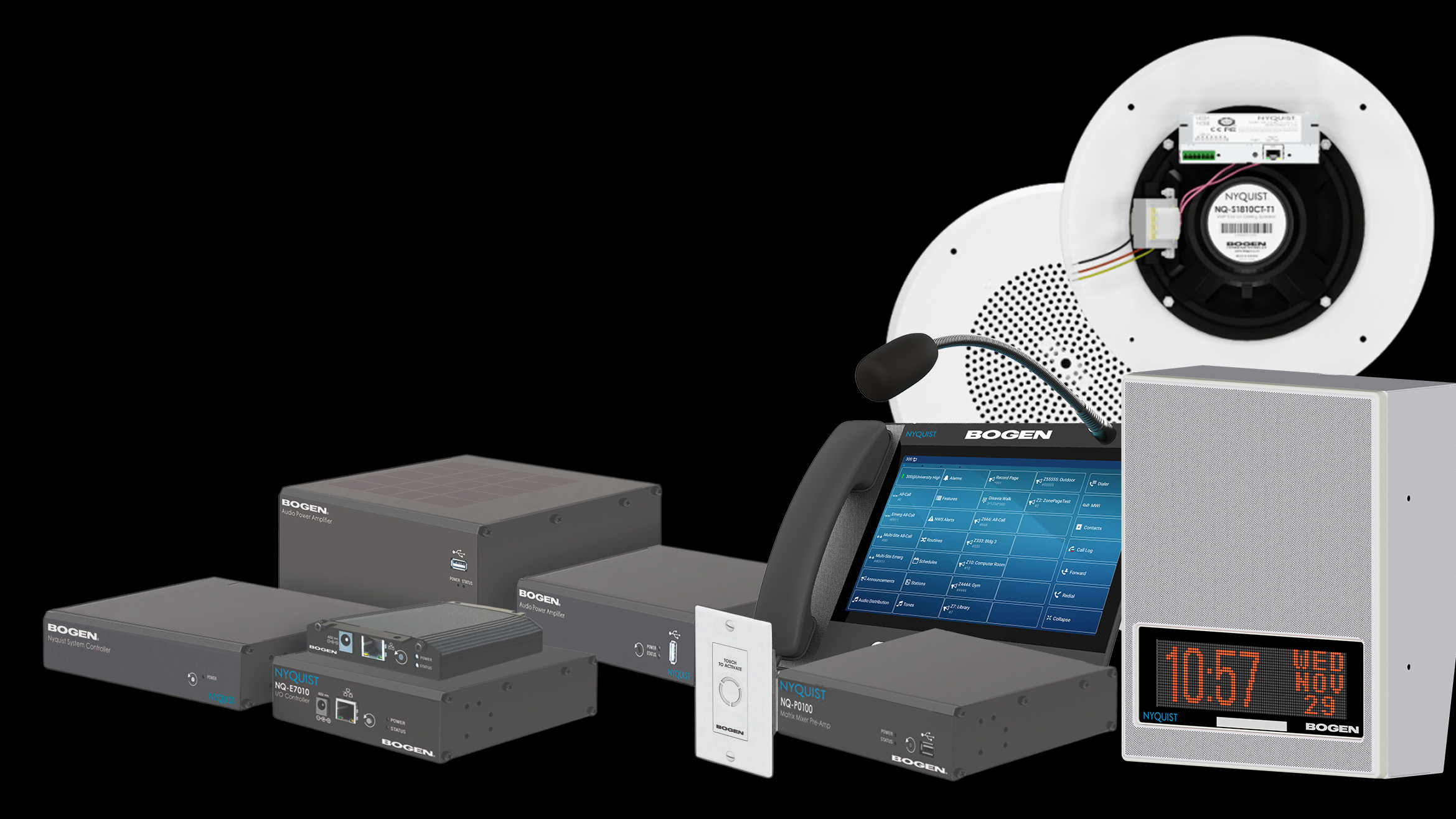
Bogen Communications has released both the Nyquist E7000 Version 9.0 and Nyquist C4000 Version 6.0 software. The Nyquist E7000 and C4000 are advanced IP-based paging and intercom systems that use modern software and third-party integrations to address evolving safety and security needs in education and commercial applications.
Nyquist E7000 Version 9.0 and Nyquist C4000 Version 6.0 each introduce over 40 new features, enhanced hardware support and robust security improvements. Version 9.0 and Version 6.0 now operate on the upgraded Debian 11 System OS, providing enhanced security and stability. Additionally, automated user logout and password protection for audio distribution further secure system operations.
[SCN Hybrid World: Out of Sight Sound]
Nyquist E7000 Version 9.0 and Nyquist C4000 Version 6.0 feature a streamlined initial setup and configuration process to reduce deployment time and ensure a smooth installation experience. The new consolidated device-level fault reporting feature for Analog Station Bridges improves system diagnostics and maintenance, enabling quicker response times and increased system reliability. Bogen Communications has further enhanced its integration of National Weather Service event codes using Routines to ensure timely and accurate weather alerts, enhancing safety and preparedness. The addition of IP addresses to the ‘Check Internet Site Access’ report and remote facility status monitoring via Routines allows for comprehensive system oversight and control.
Additional enhancements include enabling paging and audio distribution on the NQ-EDP01 VoIP Entry Door Phone, and password protection for playing audio distribution, ensuring secure and flexible communication options. The Nyquist C4000 Version 6.0 and Nyquist E7000 Version 9.0 software releases support Bogen Communications’ new Wall Baffle Combo Speaker and Message Display, the NQ-S1810WBC, which builds on the third generation Nyquist Wall Baffle VoIP speaker by adding an LED clock/message display and event-specific LED flasher. These additions allow users to have both a visual and audio emergency communication capability in one unit, further enhancing safety measures.







